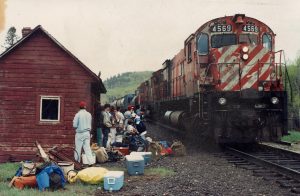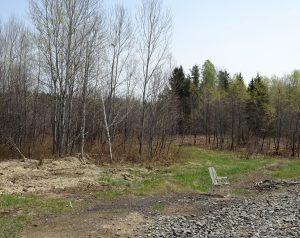Where Have All the Stations Gone?
Eulogy For Our Station
1929-2018
When I arrived at Sheahan two weeks ago (2018), there was no station to be seen. It was numbing to see such an iconic structure erased from this familiar location that has served a vital role in our community for close to 90 years. I also learned that our station was one of many that were destroyed along the CP line.
Its absence could not eradicate the nostalgic memories, both of frustration for the hours we spent waiting for the Budd car – sometimes a three to five-hour wait – to return us to our city homes, and the fun and upbeat times when we took advantage of the waits to chat with neighbours, friends, and family. However, the most important purpose of the small building was as a refuge when conditions were poor. You only had to spend a few hours in these shelters during the dead of winter, a torrential rain storm, or the swarming black fly season to appreciate its necessity. For families with young children or aging parents, this protection was invaluable.

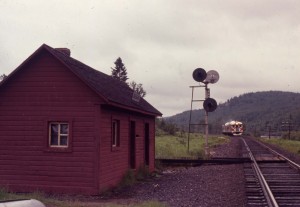
CPR stations dotted the landscape at various stops across Canada alongside the transcontinental line from the early 1900’s. Most were designed on a cookie-cutter model, a burgundy-coloured frame building, varying in size according to the community it served. Larger ones were an integral part of the CPR transcontinental operation, both to keep the trains running efficiently and taping vital messages across Canada through its telegraph line.
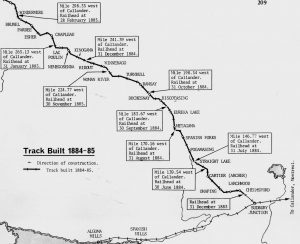
When the CPR built the transcontinental railway in the early 1880’s they positioned stops six to ten miles apart as the map above illustrates. The stops included a number of other functions: a siding for passing on-coming trains and maintenance depots. As well, the CPR constructed stations for the stationmasters, who manned the telegraph, and bunkhouses for section crews who maintained the roadbed.
Initially, there was no stop at Sheahan. Then, after 1890, lumber companies began operating in the area and they needed a stop closer to Lake Pogamasing than the original stops at Pogamasing and Spanish Forks. The lake provided easier access to the timber limits, both to supply inland camps and to bring their logs to the Spanish. Lumber companies built camps and warehouses alongside the railway.

The first stop was named “Munroe Siding” after one of the first lumbermen to establish a logging operation in the Pogamasing area. There was no need to build a station as camps and other buildings were close to the rail line.
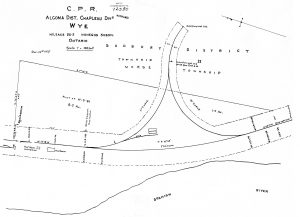
By 1917, the name changed to “Wye” which is a railway term, as the above drawing illustrates, where an engine can be turned around. CP needed such a place to return engines used to help haul much heavier loads up the Stralak hill, between the Cartier and Wye, a distance of 22.5 miles.
On January 3, 1929 W. B. Plaunt purchased the rights to the Pog Limit beginning a long-lasting association with the area. He built a sawmill and a variety of buildings – bunk house, barns, offices, homes, and a school – to support both his sawmill and the interior logging operation. The CPR built a proper station which was located on the far left on the map below. The village was on the east side of the tracks and the mill, on the western side alongside the Spanish and close to the tracks. For my grandfather’s family, it became a wonderful adventure to spend their summers in the village which developed into an attachment to the area that has continued to this day.
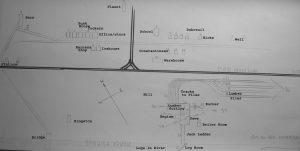
Prior to the Second World War, the railway was the only way to travel across this immense country. Consequently, passenger trains ran two or three times a day in both directions. From Wye, people of varying ages travelled to Sudbury for medical appointments, shopping, and visiting family, so a station was necessary for shelter.
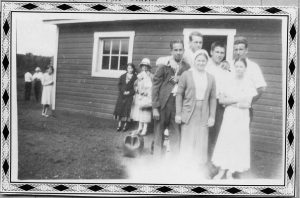
Once aviation travel began after the war, rail travel diminished, and in the 1950’s we only had a daily service along our line. Weekend guests came up on Saturday and left on Sunday. There was always a long wait at the station, now called Sheahan both to honour a Chapleau doctor and to eliminate the conflict with another CP ‘Y’ further north.
Sometime during the late fifties, diesel replaced the less-efficient steam engines. Passenger service was provided by the Budd Car, a self-propelled diesel two-car (baggage and passenger) vehicle. While we used the Budd for passenger travel, the way freight transported our heavy goods (propane, gasoline and lumber)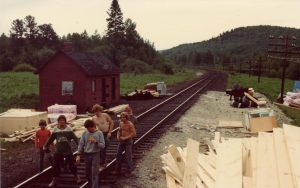
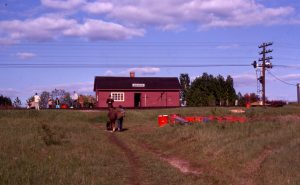
My cousins and friends began to spend more time at the station and as a result, the station became a social centre for the teenagers on the lake. Going to meet the train became an excuse to hang out with their friends.
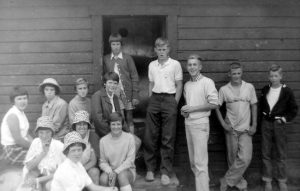
However, passenger service was no longer a priority for the two national railways and Via Rail purchased the right to provide passenger service from them in 1977. The Budd carried fishermen and their families to two tourist lodges, lake residents to their camps (cottages), the normal northern adventurers on canoe trips, and railway enthusiasts who just enjoyed travelling on the train.
As I mentioned earlier, service to small communities like Sheahan was not always ideal. We literally waited hundreds, if not thousands of hours over the years for the train to arrive or to pick us up to return to Sudbury. And there were even longer waits for the way freight. One time, my brother Robin waited two and a half days for the way freight as there was no way to communicate when it would arrive. And when it finally arrived and began unloading, it had to return to the siding at Pogamasing until the fast freight went by. In the dead of winter, I remember waiting in a dark, freezing station (at least we were protected against the howling wind) not knowing when the Budd would arrive, and being fooled a few times when a freight passed by. 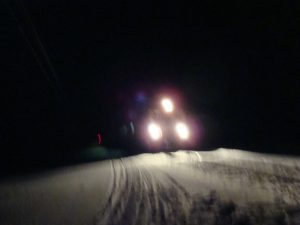 During the nineties, more Pog residents were coming in winter and especially during March Break. However, the station’s condition deteriorated. Irresponsible individuals ripped off siding to burn in the barrel stove (which was later removed). Winds removed shingles and the sun warped the rest. The station became an unattractive sight.
During the nineties, more Pog residents were coming in winter and especially during March Break. However, the station’s condition deteriorated. Irresponsible individuals ripped off siding to burn in the barrel stove (which was later removed). Winds removed shingles and the sun warped the rest. The station became an unattractive sight.
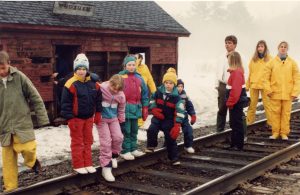
Finally, CP decided to burn the old building down around 2010. Reaction from local residents was swift. Howls of protest got the CP to reconsider and they built this new station, a much smaller, 8 x 12 version.

Although not up to the former Railway standard, the rebuilt station provided shelter against the elements. Thus, the destruction of this second building last month was a cruel ending for the stop that had been the busiest passenger destination of the Budd Car between Sudbury and Chapleau for the past six decades.
Now, there is no station and the CP has given no reason for its wanton destruction. Some suggested it was due to liability concerns, while others said the CP wanted to dispose of the right-of-way from unwanted and unsightly structures: one burned, the other buried.
To those who relied on the station, it seems just plain, mean-spirited. Some respect for the customers who used this transportation service through the decades would have been appreciated.
And for the CP executive who made the decision to destroy our station, we’ve kept a chair just for you. Now you can find out what it will be like during the on-coming bug season, spring rains, summer heat waves, and winter snow storms. Maybe you’ll reconsider your decision and re-build a new one. Like the traditional, classy ones that demonstrated that CP really cared about its clients.
There is a happy ending to our loss, as you can read here: https://andythomsonbooks.ca/thank-you-via-rail/

